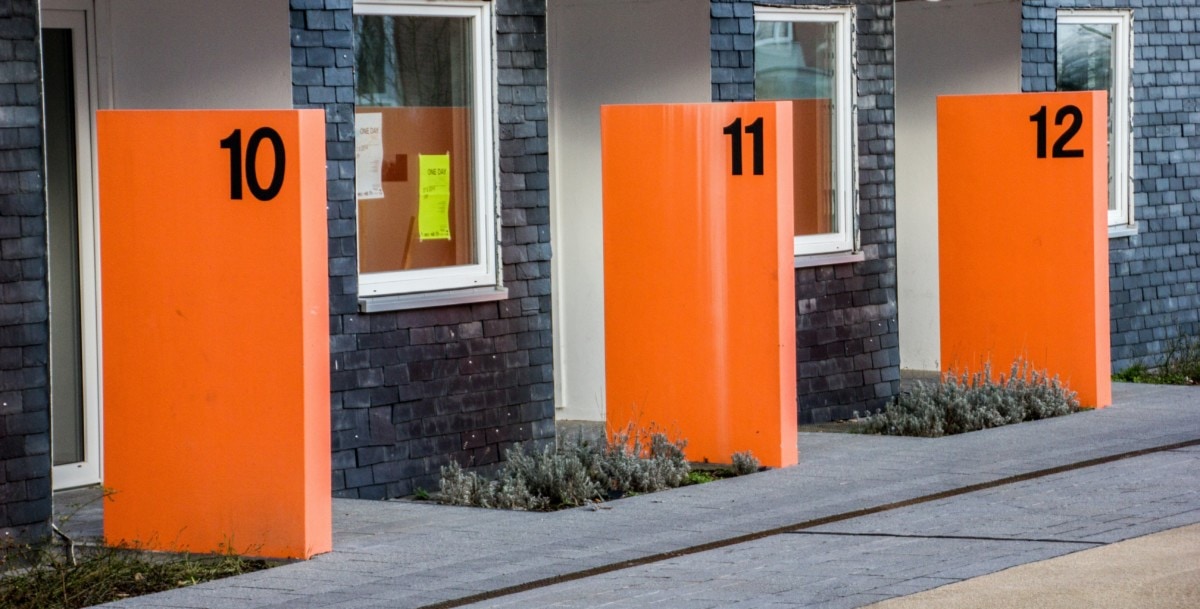Build-to-rent (BTR) homes are ideal for people who want the benefits of community living without the hassle of maintenance, mortgage payments, or HOA dues. In recent years, the movement to create more of these types of homes has been increasing due to higher demand. Because of its rapid growth, many real estate companies and investors are developing BTR properties to capitalize on the craze.
Whether you’re considering rentals in Bend, OR or investing in properties in Nashville, TN, this article covers all the basics of build-to-rent homes. Read on to learn more about whether BTR properties are right for you.

What is build-to-rent?
Originating in the 1980s, build-to-rent homes are single-family homes built for long-term rental. BTR, B2R, build-for-rent, and BFR are all interchangeable terms describing the same idea. A typical BTR tenant usually plans to stay in the rental for several years instead of buying a house. They’re generally looking for something with more space, easy parking, and an accessible community, as well as somewhere quiet and easily maintainable.
Renters’ needs influence developers’ decisions. They aim to appeal to tenants by offering high-end amenities and top-notch property management. Swimming pools, gyms, parks, and gardens are all common in build-to-rent communities.
What counts as a build-to-rent home?
Any home built for long-term renting counts as a build-to-rent home. They can come in many styles and layouts but are most likely to fit one of the following categories:
- Horizontal apartments: Single-family homes built on small lots in a rental housing community.
- Duplexes: Homes with two units side-by-side (most common) or one-over-one.
- Row homes: Homes built side-by-side with adjoining walls.
- Small lot homes: Homes built on lots smaller than the average lot size, sometimes as small as 600 feet.
Who manages build-for-rent homes?
For the most part, BTR communities are generally developed and managed by one of three entities: investors, builders, and individuals. Let’s break these down.
Investors
Large housing developments need significant capital investments. This is where investors come in. Often, investors work with lenders to fund large projects like BTR communities and apartment complexes. Investment firms — companies that receive and manage money from a collective group of investors — also fund these projects.
Lately, investors have been spending big on these homes and are projected to spend $40 billion on build-to-rent development throughout the U.S. in the next 18 months. They see the stratified housing market and surge in consumer demand as an opportunity to invest in the rental market.
Builders/developers
Investors rely on large-project builders or developers to create these rental communities. Sometimes the builders also act as investors, and sometimes they don’t. Regardless, they always specialize in community development.
Individuals
While investors and builders manage and develop most build-to-rent properties, sometimes individuals invest in a real estate investment company or a real estate investment trust (REIT). This has benefits because while investors in a company or firm are usually tied to the project from beginning to end, REIT investors can buy and sell stock as they see fit.
Individuals can also choose to build a home for rental purposes. While this technically counts as a building to rent, it’s different from developing a large rental community. That means they may not be able to ask for higher rents or attract the same type of tenant but can still get an excellent return on investment (ROI).
Expert insight: built-to-rent homes can generate passive income
Managing B2R homes is a very effective way to have someone else pay for your current mortgage. You can also get an extra monthly income, gain tax incentives, and possibly sell the property and collect the final amount of the sale. – Ryan Fransisco, Property Manager at Real Property Management Acadiana

Why are build-to-rent homes so popular?
Build-to-rent homes are a booming real estate market trend; about 5 percent of new builds are BTR properties. Historically, that number has hovered around 2.7 percent.
Overall, BTR construction has held steady over the past few years. New construction has been affected by the pandemic and may account for the slower-than-expected rate of construction in 2021. However, this year marks the first significant rise in production. Compared to last, nearly double the number of BTR homes are under construction this year. Developers are competing to fulfill new demand for rentals that offer more space and privacy to people looking for suburban homes. Urban BTRs are also becoming more popular, especially in the southwest.
“Renters across the nation want the privacy and amenities of a house without the cost of a mortgage,” says Jacob Peterson from The Listing Real Estate Management. “Investors capitalize on this strategy by combining two concrete investment strategies: scattered single-family dwellings; and multi-family homes.”
Rising home prices, inflation, and mortgage rates continue to contribute to the rise in supply and demand. Many large developers are looking to attract would-be homeowners who are priced out of the current real estate market, sometimes even working together with other developers to build communities faster and at scale.
Expert insight: BTRs are great for those who aren’t ready for homeownership
The build-to-rent market is growing fast due to continued rental demand, higher interest rates, and rising home prices, all pricing buyers out of the market. For those who aren’t ready for homeownership or can’t afford it, renting may be an attractive option, especially if the home is brand new and provides desirable amenities and community benefits. – Pavel Khaykin, owner of Pavel Buys Houses, a real estate investment company.

Should you rent a build-to-rent home?
Buying a home means taking on the responsibilities and risks of homeownership, which may not be suitable for you. Choosing a build-to-rent community can provide the comforts of homeownership without the downsides. However, there are some drawbacks, such as not building equity. Let’s dig into some of these pros and cons further.
Pros of living in a build-to-rent property
- More space than a typical rental: Many renters choose BTRs instead of apartments to enjoy extra indoor and outdoor space.
- Communal living areas: These homes typically include access to amenities like pools, gyms, dog parks, and playgrounds.
- Maintenance: Renters can enjoy their homes without worrying about pest control and replacement requests; landlords and property owners typically handle these responsibilities.
- Repairs: Because you don’t own the property, you don’t have to pay for repairs, like replacing a roof or installing a new dryer.
- Cheaper insurance: Renters insurance is usually cheaper than homeowners insurance, which means more savings.
- Social opportunities: Many communities are designed to foster connection and often provide space to help you meet similar people.
- Renters can try before they buy: Before committing to homeownership, renters can experience living in a house. A build-to-rent home also allows residents to experience a particular neighborhood before making a long-term commitment to a location.
Cons of living in a build-to-rent property
- No equity: Because your rent isn’t going towards a mortgage, you won’t build equity in exchange for house payments. Marcus Larrea, Co-Founder and Team Lead of Palm Paradise Real Estate, suggests renters be cautious before moving into a B2R property. “Because rental properties often charge higher rents with larger increases, they can be more expensive than mortgages. However, they come with a lot of amenities, which can fit people’s lifestyles better. If you’re considering renting, take your time to make the best decision for your situation.”
- Rents can fluctuate: You won’t benefit from locking in your mortgage rate. Rents usually rise more quickly than the variable costs of homeownership (taxes, insurance, maintenance).
- Character: Though luxury amenities may be available, you often won’t find unique qualities in your home. Instead, they’re usually more of a blank canvas.
- Remodeling: Because you don’t own the home, you have limited options for remodeling, including painting. If you want to customize your home, “the key is to keep updates affordable and customizable,” says the team at John McClain Design. “For example, try adding peel and stick wallpaper or a fresh coat of paint to key spaces to revitalize a dull room with bright colors. You can also change out some light fixtures to make a bold and fun statement.”
- Corporate managers: Working with corporate property managers means you may have less room for negotiating things like rent. Building a relationship with BTR property managers can be challenging unless you’re renting from an individual.
Ultimately, whether a BTR home is right for you depends on your needs and how long you plan to live in the area.

Can you manage a build-to-rent property?
Developing a rental property requires a large upfront investment of both time and money. Even though there is a housing shortage, it can be difficult to capitalize on a BTR home without pooling resources with several other investors, usually with an investment firm.
Dennis Adelpour from The Adelpour Group suggests approaching the situation with caution. “Although BTR homes can be a good method to start investing in real estate, many have a high barrier of entry, requiring the investor to find the ideal location without overspending,” he says. “If you’re a cautious investor, there are other methods to capitalize on BTR homes, including REITs that include them in their portfolio.”
Large property developments rely on economies of scale – the ability to purchase materials at a discount because you’re buying in large quantities. “Institutional investors with deep pockets build most of the BTR homes,” says the team at Next Brick Property Management. “These investors can build dozens at once and take advantage of economies of scale, reaping large profits.” Additionally, permits and other legal matters are difficult for one person to manage.
As a smaller investor, you may still be able to build an investment property or add an auxiliary dwelling unit (ADU) to an existing property. Lori St John, Esq. with The Lori St John Group, advises that “if you want to invest in B2R properties, it’s essential that you work with a professional who is knowledgeable about the area to best increase your net cash flow.”
Expert insight: consider low-risk properties when investing in BTRs
“We recommend that individuals find modest, low-risk properties. These can enable investors to maximize their investment in the short term. However, in expensive metropolitan areas where any home is pricey, a build-to-rent strategy may be beneficial.” – Taylor Lovett from 8 Day Home Sale
Pros of owning a build-to-rent property
- Huge demand: Depending on your market, very few build-to-rent properties may be available nearby to accommodate the demand. If so, you may get a tenant quickly and collect rent sooner. “If you find a single-family home that is zoned for multi-family housing, building a new apartment complex or duplex can be a great option to maximize returns,” says real estate consultant Will Rodgers. “In recent years, build-to-rent has become a hugely popular technique for building luxury rental properties, especially along waterfronts.”
- Less tenant turnover: BTR properties are designed to attract long-term tenants, so you can expect less turnover and fewer costs associated with finding and replacing temporary renters.
- Opportunity to grow: Some neighborhoods and rental markets have more lots than housing, which can lower the competition for future development properties.
- Higher rent: You may be able to ask for higher rent if you build a new home or offer luxury amenities. Look at comparable properties and determine a fair market value for the home. Sean Bakhtiari, Owner of Seacoast Vacation Rentals, notes that the more bedrooms you have, the more you can charge. “3-4-bedroom properties allow you to charge higher nightly rents. Along with decreasing competition from other rental properties, having more bedrooms with large beds also helps keep your renters comfortable.”
- Tax incentives: Some areas offer tax incentives and other perks for building new homes.
Expert insight: partner with agencies to increase your investing ability
Potential investors can partner with real estate agencies like Native to find new, high-quality homes in areas with a high demand for rentals. This investment route has many benefits, including builder warranties and an endless selection of tenants. However, it can be expensive to start investing – landscaping, appliances, and window treatments can add up. – Jessica Foote, CEO of Native Real Estate
Cons of owning a build-to-rent property
- Possibility of low return on investment (ROI): Unless you can develop BTR communities at scale, it may be hard to generate an ROI. Most smaller real estate investors can get a better ROI by investing in different property types, such as fixing up an older home in a good rental area.
- Competition: Competing with big-time developers is extremely difficult, especially as they invest more heavily in the rental market. You may have better chances of building a smaller property or ADU. However, it is possible to invest in a larger property complex. “It’s not just big developers that are jumping on board with B2R properties,” says Dale Corpus, a San Ramon, CA, Realtor. “Individual builders are teaming up to combine their skills and are constructing B2R neighborhoods without the help of developers.”
- Tax incentives: Cities typically offer tax incentives for affordable housing development, which can limit profits.
Expert advice: take plenty of photos when listing your property
When listing your rental, take plenty of photos. Photos can help you showcase your rental for potential tenants and help your agent list the property. Most importantly, you need to take them for possible insurance reimbursement in case some renters damage something. – Tal from Goldnest Property Management

Build-to-rent investment alternatives
Instead of building a single-family rental, you can purchase a distressed property through auctions, wholesalers, and similar services. Distressed homes often need significant repairs before being rented out, and these investments require a significant capital investment that usually requires paying higher interest rates.
Renovating a distressed property often creates additional equity in the home, and you may have the option to refinance any lending once you complete the repairs. This method of flipping distressed houses for rent is known as the BRRRR method (buy, rehab, rent, refinance, repeat) and can be an effective form of supplemental income.
An alternative is investing in a real estate investment trust (REIT). You can buy and sell shares of a REIT just like stocks on the stock market, and you don’t have to manage a property. This method means your wealth is more easily liquidated (turned into cash) without managing a property. However, it also means you can lose out on the benefits of owning a property, including tax incentives and the freedom to choose what to do with your investment.
Expert insight: ADUs can be a great option
If you want to build a new ADU, you have many options: You can build it detached as a freestanding structure, convert an attic or garage space, or convert another part of your house. Regardless, you need to get permission from your municipality before renovating or building. – The team at KAP Studios
Final thoughts
Whether you’re looking for an investment or a nice place to live, it’s important to crunch the numbers before making a decision.
For renters
If moving into a BTR house is a substitute for long-term home ownership, you may be better off choosing a more modest rental and saving up for a future house down payment. If you need a comfortable place to live for a few years, with outdoor space and community amenities, renting a BTR home can be a better option.
For investors
The good news is that you have a ton of options when it comes to real estate investment. Take some time to understand your goals and why you have them. “If you’re building an individual B2R property, remember you’re building it for renters, not for yourself,” notes Donna Richardson from PropertyTalk. “One mistake new investors make is they choose features they personally need. Instead, choose features that are in demand for renters.”
You may find that investing in a BTR community through an investment firm is your best option, but you won’t know until you dig in.
The post Build-To-Rent Homes: What You Need to Know About the Future of Single-Family Rentals appeared first on Redfin | Real Estate Tips for Home Buying, Selling & More.
from Redfin | Real Estate Tips for Home Buying, Selling & More https://ift.tt/RLmJUEQ


No comments:
Post a Comment